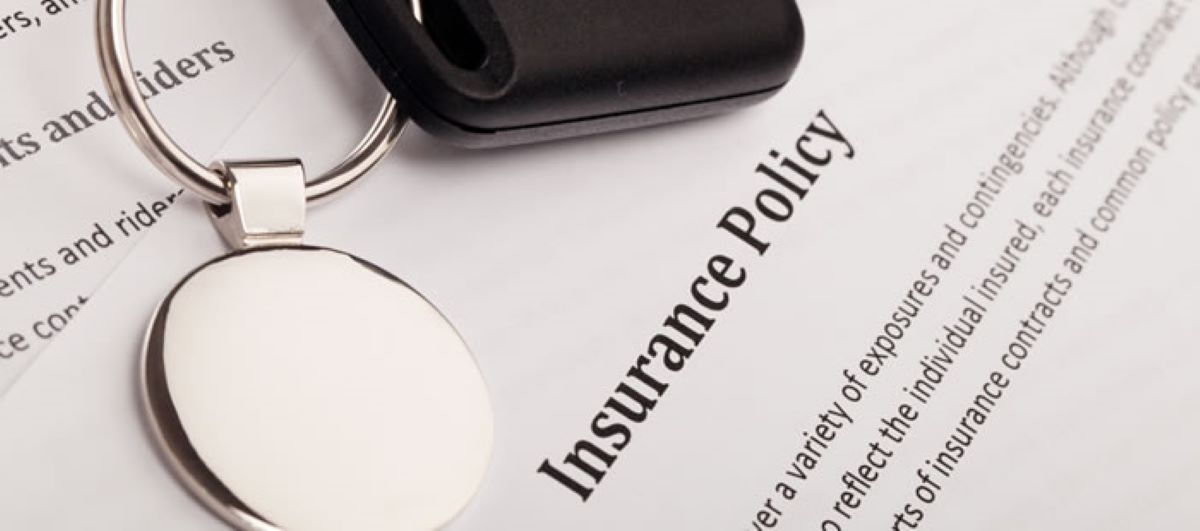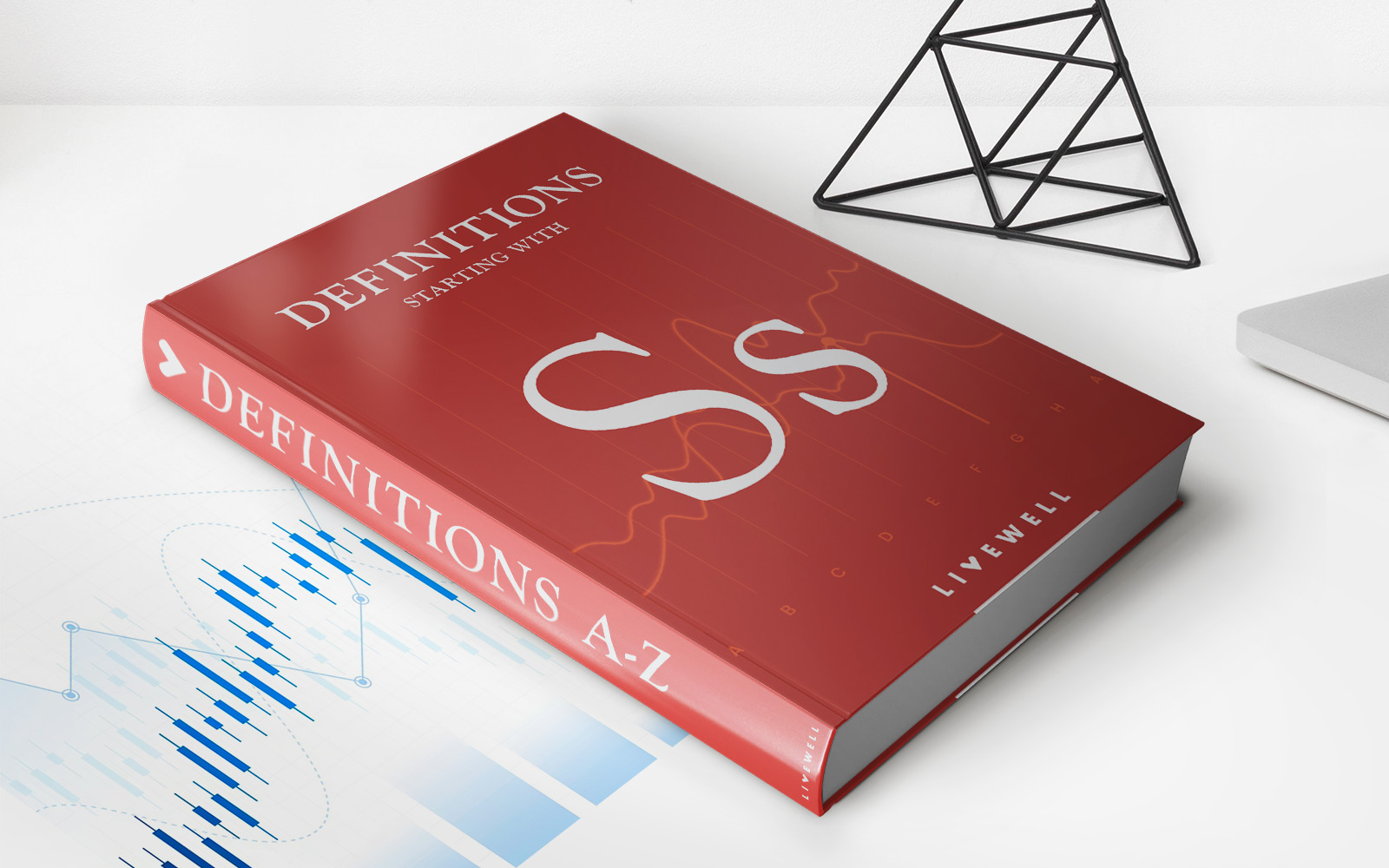

Finance
What Is Stacked Insurance?
Published: November 5, 2023
Learn how stacked insurance can provide comprehensive financial protection for your assets. Find out what it is and how it can benefit your finances.
(Many of the links in this article redirect to a specific reviewed product. Your purchase of these products through affiliate links helps to generate commission for LiveWell, at no extra cost. Learn more)
Table of Contents
Introduction
When it comes to protecting your financial well-being, insurance is a crucial component. Whether it’s auto, home, or any other type of coverage, insurance provides peace of mind by safeguarding against unexpected expenses. However, depending on your circumstances, the standard coverage amounts offered by insurance policies may not be sufficient to fully protect your assets.
This is where stacked insurance comes into play. Stacked insurance is a concept that allows policyholders to increase the coverage limits on their insurance policies by combining the limits from multiple policies. It is commonly used in auto insurance, particularly for those who own multiple vehicles or have family members listed on their policy.
Unlike traditional insurance policies, which have fixed coverage limits, stacked insurance provides a higher level of protection by combining the coverage limits of multiple policies. By doing so, policyholders can effectively “stack” the coverage amounts, thereby increasing their overall protection in the event of an accident or other covered incident.
Stacking insurance can be a valuable option for individuals who need greater coverage protection beyond what a single policy can offer. However, it’s important to understand how stacked insurance works, its benefits, drawbacks, and factors to consider before opting for this type of coverage. By gaining an understanding of stacked insurance, you can make informed decisions about your insurance needs and ensure you have adequate protection.
Definition of Stacked Insurance
Stacked insurance is a way for policyholders to increase their coverage limits by combining the limits of multiple insurance policies. This concept is most commonly associated with auto insurance, but it can also apply to other types of insurance, such as homeowners or renters insurance.
At its core, stacked insurance allows policyholders to essentially “stack” the coverage amounts from different policies to create a higher limit of protection. For example, if you have two cars insured under separate auto insurance policies and both have stacked insurance, you can combine the coverage limits of both policies to create a higher overall coverage limit.
How does stacked insurance work? Let’s say you have two cars insured. Each policy has a coverage limit of $50,000 for bodily injury liability. With stacked insurance, you can “stack” those limits and increase your coverage to $100,000. This means that if you’re involved in an accident and found liable for bodily injury, your insurance will provide coverage of up to $100,000 per person or per accident, depending on the policy terms.
Stacking insurance can also be applied to uninsured/underinsured motorist coverage, which protects you in the event of an accident caused by a driver who doesn’t have insurance or has insufficient coverage. By stacking this coverage, you can increase the protection for yourself and your passengers in case of an accident with an uninsured or underinsured driver.
It’s important to note that stacked insurance is not available in all states, as regulations and insurance laws vary. Some states require insurers to offer stacked insurance, while others prohibit it. Therefore, it’s essential to check with your insurance provider or agent to determine if stacked insurance is an option for you.
How Stacked Insurance Works
Stacked insurance works by combining the coverage limits from multiple insurance policies to create a higher overall limit of protection. The process of stacking insurance may vary depending on the type of coverage and the insurance laws in your state.
In the context of auto insurance, stacking typically involves combining the coverage limits of multiple vehicles insured under separate policies. For example, if you have two cars insured with stacked insurance, each with a coverage limit of $50,000 for bodily injury liability, the coverage limits can be stacked to provide a total of $100,000 in protection.
When it comes to determining how much coverage is available under stacked insurance, there are two types of stacking: vertical stacking and horizontal stacking.
- Vertical stacking: In vertical stacking, you can combine the coverage limits of the policies to increase your per-person limit. For instance, if you have two cars insured and each has a coverage limit of $25,000 for bodily injury liability, vertical stacking would allow you to combine the limits to have a total of $50,000 per person.
- Horizontal stacking: In horizontal stacking, you can combine the coverage limits to increase your per-accident limit. Using the same example, if each car has a coverage limit of $25,000 for bodily injury liability, horizontal stacking would provide a total of $50,000 coverage limit per accident.
It’s important to note that not all states allow both vertical and horizontal stacking. Some states only permit one type of stacking, while others may not permit stacking at all.
When selecting stacked insurance, it’s crucial to understand the differences in coverage and how it may impact your premium. Stacked insurance generally comes at a higher cost compared to non-stacked insurance due to the increased coverage limits. However, the exact premium increase will depend on a variety of factors, including your insurance company, the number of policies being stacked, and your driving record.
It’s also worth mentioning that stacked insurance is not applicable to all types of insurance. While it is commonly associated with auto insurance, it may not be available or applicable to other forms of coverage. Therefore, it’s essential to consult with your insurance agent or provider to determine if stacked insurance is an option for your specific insurance needs.
Benefits of Stacked Insurance
Stacked insurance offers several benefits to policyholders, making it a valuable option for those who require additional coverage protection. Here are some key advantages of stacked insurance:
- Increased Coverage Limits: The primary benefit of stacked insurance is the ability to increase your coverage limits. By combining the limits of multiple policies, you can create a higher overall limit of protection. This is especially beneficial if you have multiple vehicles or family members listed on your policy.
- Enhanced Financial Protection: With higher coverage limits, you are better protected financially in the event of an accident or covered incident. Stacked insurance provides an extra layer of security to ensure that you have adequate coverage to handle potential expenses, such as medical bills or property damage.
- Greater Peace of Mind: Having stacked insurance can provide peace of mind, knowing that you have taken steps to protect yourself and your assets. It can alleviate concerns about being underinsured and help you feel more confident in your insurance coverage.
- Flexibility in Coverage Allocation: Stacked insurance allows for flexibility in how coverage limits are allocated across policies. This means that you can distribute coverage limits to specific vehicles or individuals based on their needs, ensuring that everyone has appropriate levels of protection.
- Protection Against Uninsured/Underinsured Drivers: Stacking uninsured/underinsured motorist coverage can be particularly valuable. If you are involved in an accident with a driver who has no insurance or insufficient coverage, stacked insurance can provide additional financial protection for yourself and your passengers.
It’s important to note that the benefits of stacked insurance can vary depending on your individual circumstances and insurance needs. It’s advisable to consult with your insurance provider or agent to understand how stacked insurance can specifically benefit you and what additional costs may be associated with this type of coverage.
Drawbacks of Stacked Insurance
While stacked insurance can provide valuable benefits, it’s important to consider the potential drawbacks before deciding if it’s the right choice for your insurance needs. Here are some potential drawbacks of stacked insurance:
- Higher Premiums: One of the primary drawbacks of stacked insurance is that it often comes with higher premium costs compared to non-stacked insurance. This is because stacked insurance provides increased coverage limits, which means a higher level of protection comes at a higher price.
- State Limitations: Stacked insurance availability and regulations vary by state. Not all states allow stacking, and those that do may have specific limitations or requirements. It’s essential to understand the laws and regulations in your state before considering stacked insurance as an option.
- Potential Complexity: Stacking insurance can add complexity to your policy. Managing multiple policies and coverage limits may require additional time and effort. It’s important to carefully review and understand the terms and conditions of each policy to ensure you are leveraging the stacked insurance correctly.
- Diminished Flexibility: While stacked insurance provides flexibility in coverage allocation, it also limits your ability to customize coverage for individual vehicles or policyholders. You’ll need to allocate the coverage limits among the policies, which may not align with each vehicle’s or individual’s specific needs.
- Requirement for Multiple Policies: Stacked insurance typically requires multiple policies to be in place to be effective. If you don’t own multiple vehicles or have family members listed on your policy, the option for stacked insurance may not be relevant or available to you.
It’s important to carefully weigh these drawbacks against the benefits of stacked insurance to determine if it’s the right choice for your specific insurance needs. Consider your financial situation, coverage requirements, and individual circumstances to make an informed decision.
Examples of Stacked Insurance
Stacked insurance is commonly associated with auto insurance, as it allows policyholders to increase their coverage limits by combining the limits of multiple vehicles or policies. Here are a couple of examples to illustrate how stacked insurance works:
- Example 1: Multiple Vehicle Coverage
Let’s say you own two cars and have separate auto insurance policies for each vehicle. Each policy has a coverage limit of $50,000 for bodily injury liability. With stacked insurance, you can combine the coverage limits of both policies to create a higher overall coverage limit. This means you would have a total of $100,000 in bodily injury coverage. If you’re involved in an accident and found liable for bodily injury, your insurance would provide coverage of up to $100,000 per person or per accident, depending on the policy terms. - Example 2: Family Member Coverage
Another example of stacked insurance is when you have family members listed on your policy. Each family member has their own car and separate auto insurance policy. If all family members have stacked insurance, you can combine their coverage limits to increase the overall protection. For instance, if each policy has a coverage limit of $25,000 for bodily injury liability, stacking the limits would provide a total of $100,000 in bodily injury coverage. This means that if any family member is involved in an accident and found liable for bodily injury, the insurance would provide coverage of up to $100,000 per person or per accident.
It’s important to note that these examples are simplifications, and the actual amounts and coverage limits will depend on the specific policies and insurance companies involved. Additionally, the availability and specifics of stacked insurance may vary by state and policy terms.
While these examples focus on auto insurance, stacked insurance may also be applicable to other types of coverage, such as homeowners or renters insurance. In these cases, the concept allows policyholders to increase their coverage limits by combining the limits of multiple policies.
It’s crucial to review your insurance policies, consult with your insurance agent, and understand the terms and conditions to determine if stacked insurance is available and suitable for your specific insurance needs.
Factors to Consider Before Opting for Stacked Insurance
Before deciding whether to choose stacked insurance, it’s important to consider several factors to ensure it aligns with your insurance needs and financial situation:
- State Regulations: Research and understand the insurance laws and regulations in your state regarding stacked insurance. Some states may prohibit stacking, while others may have specific requirements or limitations. Make sure stacked insurance is legally permissible in your state.
- Coverage Needs: Assess your specific coverage needs and determine if stacked insurance is necessary. Consider factors such as the number of vehicles you own, the number of family members on your policy, and the value of your assets that require protection. Evaluate if the standard coverage limits of a single policy are sufficient or if stacked insurance would provide added peace of mind.
- Cost implications: Stacked insurance generally comes with higher premium costs due to the increased coverage limits. Consider your budget and the potential impact on your insurance premiums. Obtain quotes from different insurance providers to compare the costs of stacked insurance against non-stacked options.
- Flexibility: Assess the flexibility offered by stacked insurance. Determine if you can allocate coverage limits to specific vehicles or family members based on their needs. Evaluate if this flexibility aligns with your preferences and individual circumstances.
- Claims Process: Understand the claims process associated with stacked insurance. Research how the coverage limits are applied and the steps involved in making a claim. Ensure that the claims process associated with stacked insurance aligns with your expectations and meets your needs.
By carefully considering these factors, you can make an informed decision about whether stacked insurance is the right choice for you. It’s also recommended to consult with your insurance provider or agent. They can provide personalized guidance based on your individual circumstances and help you determine the most suitable coverage options for your needs.
Conclusion
Stacked insurance can be a valuable option for individuals seeking increased coverage limits and enhanced financial protection. By combining the coverage limits of multiple insurance policies, stacked insurance offers a higher level of security compared to traditional insurance policies with fixed limits.
Throughout this article, we have defined stacked insurance as a concept that allows policyholders to “stack” coverage limits from multiple policies to create a higher overall limit of protection. We explored how stacked insurance works, its benefits, drawbacks, and factors to consider before opting for this type of coverage.
The benefits of stacked insurance include greater financial protection, increased coverage limits, and flexibility in allocating coverage. It can provide peace of mind, especially for those with multiple vehicles or family members on their policy. However, stacked insurance may also come with higher premiums, state limitations, and added complexity.
Examples of stacked insurance in relation to multiple vehicle coverage and family member coverage have been provided to illustrate how coverage limits can be combined to increase overall protection. It’s important to review the specifics of your policies and consult with your insurance agent to determine if stacked insurance is available and suitable for your needs.
Before opting for stacked insurance, factors such as state regulations, coverage needs, cost implications, flexibility, and the claims process should be carefully considered. Taking these factors into account will help you make an informed decision about whether stacked insurance aligns with your insurance requirements and financial circumstances.
In conclusion, stacked insurance can be a valuable option for individuals who require higher coverage limits. It provides an additional layer of protection and peace of mind. However, it is essential to assess the potential drawbacks and consider individual factors before deciding if stacked insurance is the right choice for your specific insurance needs.














